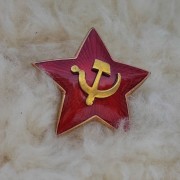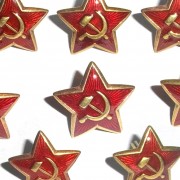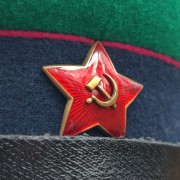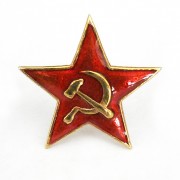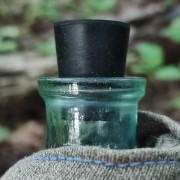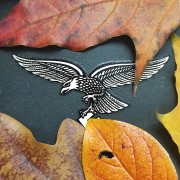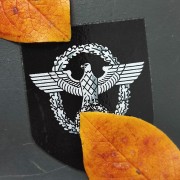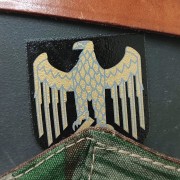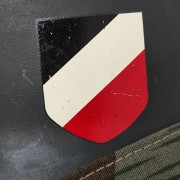Description
We developed this decol using computer modelling. Proportions are accurate, star is absolutely simmetrical. Size 7 cm (2¾ in.) between left and right end points (height is the same).
The hammer and sickle symbol (СиМ: серп и молот, "serp ea molot") in the center of the star is a separate decal. You can cut the SiM symbol off, then you get a star without SiM (later type).
How to install the decal?
Put a piece of paper with the image (nothing to cut) in warm water for 30-60 seconds. If there are advertising elements (logo or frame) on the decal, you can remove them in water (clean off with your fingers from the paper). After that, put the decal onto the surface of the helmet, hold the drawing with your finger, and pull out the paper from under it. The star has a lacquer substrate only on the perimeter, so it will deform during sliding from paper. It's not bad, you just should take the paper out gradually, and then set the star evenly, wetting it with water when it sticks. You also can make tiny markings on the helmet, using a pencil, where star's ends should sit. Remove water from under the drawing with a cloth or toilet paper, holding the drawing with your fingers.
How to fix the decal?
You can varnish the decal (or whole helmet), so the decal won't be washed off with water. It sold in cans in stores for artists or auto work-shops. You can also "bake" the decal. To do this, heat the helmet in the cooker oven so that it's not nice to touch with the hand, but not more, so as not to burn the paint. Baking usually goes well, and the decal is held so firmly after cooling that it can only be removed together with the paint! It literally melts into the paint.
Historical reference.
Stars — a real decoration of the helmets of the Red Army. Stars with SiM (hammer and sickle symbol) were applied as standard since the early 1930s. At the beginning of the war it was considered excessive, but soldiers could apply the stars (with or without) the SiM in private during the war.










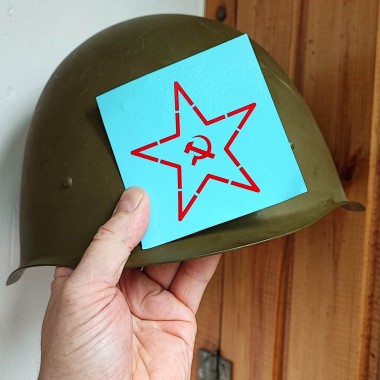







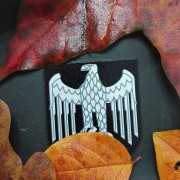
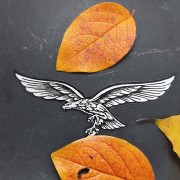
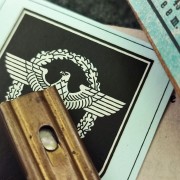
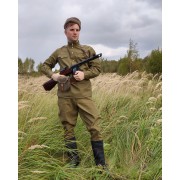
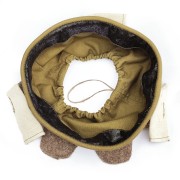
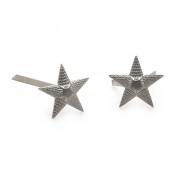
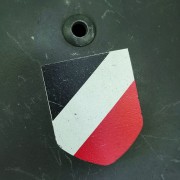
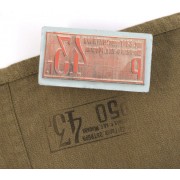
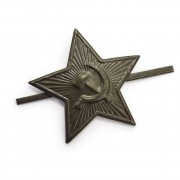
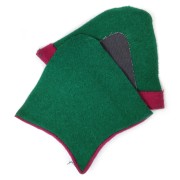
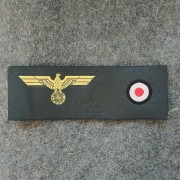
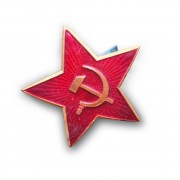
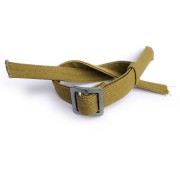
![[on order] Star with hammer and plow [on order] Star with hammer and plow](https://reenact.store/image/cache/6f9ccdd2397bd0cc7d0c9308c8786a7f.jpg)
